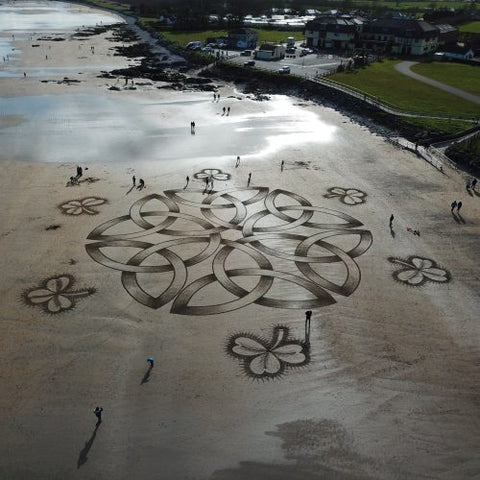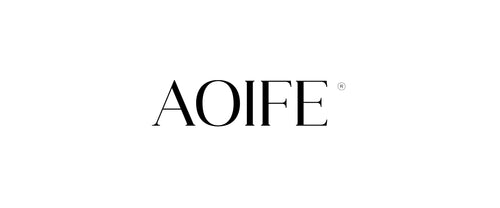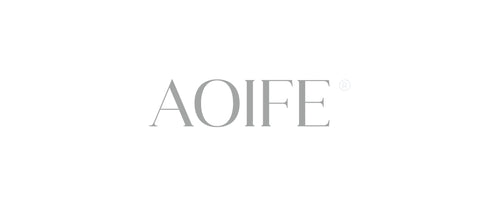There is nothing Permanent except Change
A look at the beautiful work of environmental artist, sculptor and engineer –
Manuel Frolich…
Art is described differently by every person. How you interpret it, how it makes you feel, and what you see can affect how you think about it. The same goes for Nature. But are these two things that different? Is one not the same as the other? Nature is a form of art; art is within Nature.

The raw beauty of the ocean can be represented just as well on a blank canvas as on the very beach itself. Here at aoife ®, we collaborate with artistic people who have the same love and respect as we do for Nature.
Who are these artistic people we speak of, and how can you better know them as we do? We aim to regularly share edits of artists’ work inspired by their respect and love for Nature. Manuel Frolich is a talented creative sculptor renowned in his field, and he creates temporary landscape art installations out of the sand. Ephemeral sand art is a tricky but beautiful form of art and the perfect representation of how Nature and art are equal because of how they make us feel. One of the many attractive opportunities was to interview Manuel Frolich, a sand artist who creates the most beautiful pieces using this very earth as his canvas.

Manuel, who are you?
“My name is Manuel Frolich, better known as ‘Manu’. I was born in Santiago de Chile, grew up in Rio de Janeiro, was raised in Germany, and now living on the southeast coast of Ireland since 2000. I have travelled to more than thirty countries, and I have finally found my home.”

When did you start your creativity, and what inspired you to follow your chosen path?
“Having always been attached to art in general, I began to do many abstract paintings in the 90s, which led to the idea of studying arts at a well-known college in Stuttgart. After failing to get a place, I went on to study architecture, which now explains my fascination with geometry-based artworks.
So how did my journey with sand art begin? It all started in 2008/2009 on one of the many beach excursions my two children would go on. I found a piece of driftwood, and like many others, I started scribbling on the sand with it. I used always to draw a secret message that I designed in 1990, which my wife and myself wear as a tattoo instead of a wedding ring.
I kept on doing little sketches throughout the years, and it was in April 2014 when I did my first large-scale drawing, measuring approximately 50 meters in diameter. I worked for four hours (not knowing tide times yet!), abandoning the unfinished drawing. I raced up the cliffs to take some images. The view of this first drawing told me: there’s more to this!”

How long does a project take, and what is your creative process?
“The time spent on every project can be very different. It mostly takes 4-6 hours to complete a drawing on the beach, but it needs a lot of preparation work. I start at the desk, first playing around with design ideas, only using a ruler and compass. Once a drawing is complete on A3, I work out a geometrical construction plan for the beach, which is highly important as I have only limited time between the tides. On the beach, I start with the tide going out, taking measurements and finding construction points, always using the same four tools; measuring tape, a bamboo stick, string and a set of different rakes. The outlining can take up to 3-4 hours before the actual drawing takes place. Some people claim I would use dark sand to create my designs, but no, it’s just raked sand. I do need the tides to draw. Tidal sand contains a lot of moisture, it is dry and bright on the surface, and when I rake it, the wetter, and therefore darker, sand comes up and creates a beautiful contrast, this is how I draw’.”


What role do you think your art plays in society? Why is it important?
“Art plays a big part in society by changing opinions, instilling values, and translating experiences across space and time. Art in this sense is communication; it allows people from different cultures and times to communicate via images, sounds, and stories. Art is often a vehicle for social change; it is an essential part of our culture because it allows us to have a deeper understanding of our emotions, increases our self-awareness, and allows us to be open to new ideas and experiences. In my art, impermanence also plays a big factor. It’s a play with Nature; Nature provides me with a big canvas. I use my time to create a beach drawing, and then Nature claims it back. The circle of life. The letting go.”


Has your practice changed over time, and if so, how?
“Of course, my style of drawings has changed; you grow in doing something like this. A huge part of my art has Celtic influences, the geometry, in general, got more intricate, and I learned a lot of shading techniques (and writing techniques for commissions) to give some drawings a 3D effect. But the basics have stayed the same since day one, the play with geometry.”

Which part of the work do you most enjoy doing and why?
“Every single step is a joy of its own. It is exciting to see a design growing on paper until it reaches its final version. I usually mark and shade the finished piece with markers to copy the raking effect that I plan to do on the beach. To work out my mathematical plan is tricky and time-consuming, but when it’s all ready for the beach, this construction doesn’t leave my mind until it’s finished on the sand. Studying tide times and the weather forecast, picking the location, getting all my tools ready for a long day of creating is full of joy. If I don’t construct the design completely in my head, I won’t succeed on the beach. Anticipation is the greatest joy. Some of my locations are pretty remote and need long coastal walks and hiking down cliffs to get there; there are always new ideas if you know where to look. The views, the smells, and the sounds of the sea are hard to beat.
Then the experience of creating one of those drawings. To see the outlining coming along bit by bit while working on it, trying to ‘picture’ the drawing from above. After finishing a drawing, I instantly launch the drone; the first look on the screen is another big joyful moment, the first glimpse to see if everything worked out the way I wanted it to happen. The next big moment is the incoming tide reaching and slowly erasing the drawing. Most people ask me if I’m sad to see it go after all the hard work, the answer is no. Never. Being thankful that Nature provides all these big blank canvases (even if only for a short time) is a blessing. Having all drone images done is like my drawings will live on forever in some way, and therefore I’m pleased to see it go; something gets vanished that will never appear again. A soothing moment. Finally, the last stage of one project is going through tons of images and videos; I never rush with the editing as I enjoy it so much.”

What would be your dream project?
“Dream project? Hmm.
I reached millions of people with my art last year; I got featured online numerous times and made it twice onto the front page of Reddit. Commission wise, I got approached by wonderful people, including TV shows and big companies; I won an American arts award and so on. This is all like a dream. The next project is always a dream project.”
Have you ever pursued a project outside of your comfort zone?
“There is no real comfort zone; every project is a challenge, needs disciplined preparation before and full concentration on the day. But some commissions included things I’ve never done before, like drawing a portrait, writing in Japanese, creating a lighthouse, a 15000 Square foot memorial book, and different companies logos, to name a few.”


What is your favourite/ most inspirational piece?
“Hard to name a single favourite- I have so many. But if I had to choose one, it would be my contribution to the Sri Yantra Challenge in 2017. This piece opened doors for me. Fifteen selected land artists around the globe created their version of the sacred Sri Yantra design on five different continents within four weeks. I was overwhelmed having been one of them.”
What inspires you? What connection do you have to your art, Nature?
“My basic inspiration is life- my life. The fascination of shapes, patterns, sacred geometry or basic geometry in general, the sense of space, Celtic art, optical illusions- all this and more leads to my style of designs, and I love to place those as a contrast. To the smoothness of Nature.”

Is there a control in your art, or is each piece completely different?
“I’m always trying to bring something new to a project, it’s good to try out different designs and techniques, but some themes reappear in different drawings, which is ok; just let it happen, just go with the way your head wants to finish it- it also creates a bit of a trademark.”
What does your artwork represent?
“My artworks are there for everyone’s interpretation. Some are just design pieces; some have a deeper meaning that I rather keep instead of influencing the viewer. All my art pieces can be felt and looked at individually; I don’t guide, I offer.”


Have you noticed any changes on the beach seashore since you began your creative journey?
“The changes that I noticed on the beaches that I frequently visit for the last few years refer to different areas. I want to highlight two major discoveries; firstly, the general constant change of the landscape of beaches. Sand levels change in a way I was never aware of before. Beaches with perfect canvasses for years, perfect firm sand to draw on turn into a rocky scenario after a bad winter’s storm- and the sand doesn’t come back for years. After spending so much time on the beautiful Irish shoreline, I was shocked by the amount of rubbish and plastic washed onto the most wonderful places. It’s shocking. It does make me feel bad and sad as a human being.”
Ever since humans began to create art, Nature has been our inspiration. We strive like environmental artist Manuel to make a difference and provide awareness for Nature’s beauty and its survival. We want to help people notice Nature, its beauty, magical mysteries and its impermanence of life and Nature; the most beautiful things like Manuel’s art, like a sunset, aren’t permanent but rather a moment to cherish in time.


Working collaboratively to save our planet is the only way to repair the damage we have caused. Through art, especially temporary art, we can create a sense of urgency and importance of how our actions damage nature and what we can do to help. Through ephemeral art like Manuels, we get to relax and observe our effects on Nature. We get to feel moved by it, tune into the natural world, express our appreciation for Nature, enhance our connection with Nature. Ephemeral Art and the beauty of it is that it teaches us that not everything we value has to be material sometimes; it’s the process itself that is fulfilling enough to make us focus.

Sincere thank you to Manuel for sharing his beautiful harmonious work with us, his chosen career and his work is a muse to us all.



